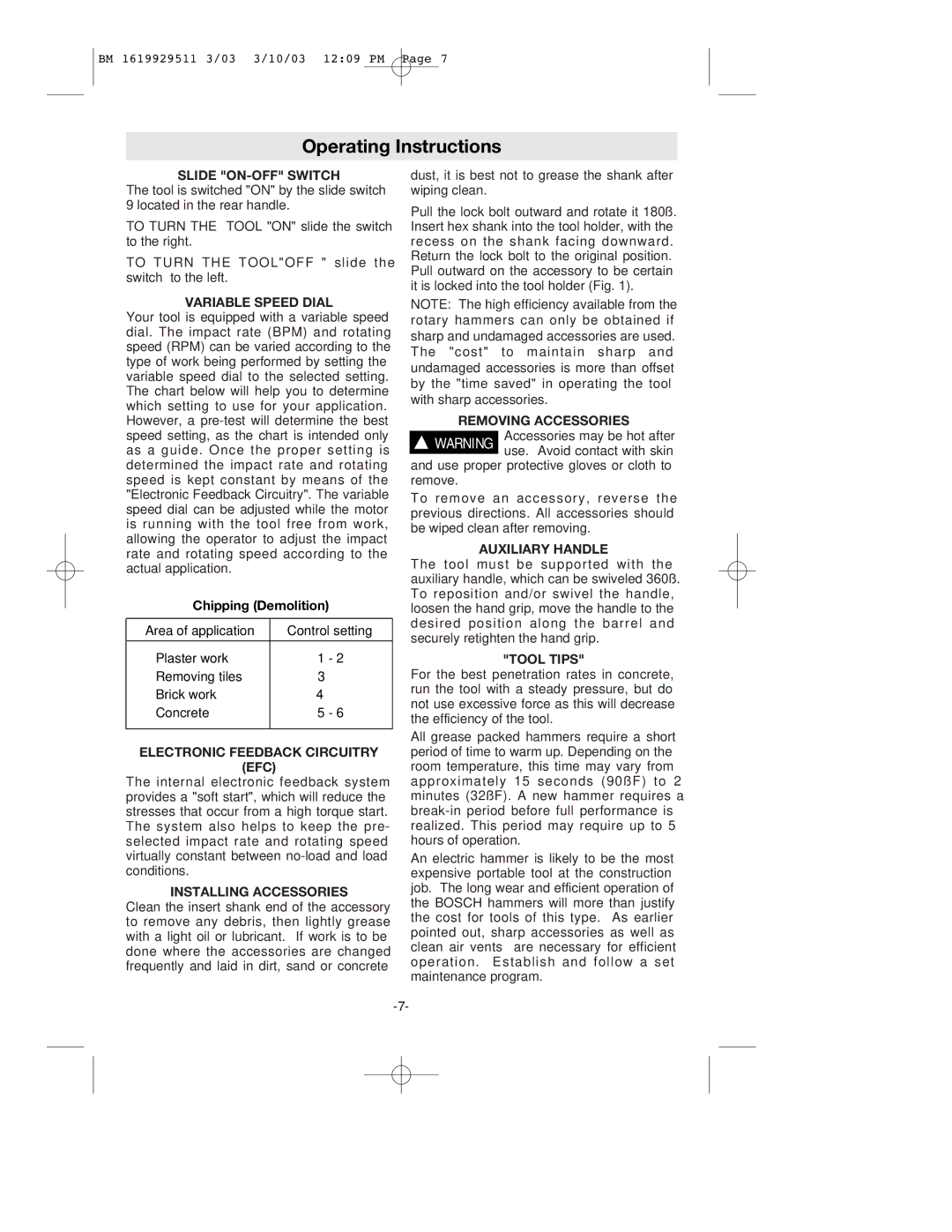11317EVS specifications
The Bosch Power Tools 11317EVS is a versatile and powerful tool that has become a staple for both professionals and DIY enthusiasts. This tool is designed to deliver unmatched performance, durability, and precision for various applications, making it an excellent choice for construction, renovation, and woodworking projects.One of the standout features of the 11317EVS is its robust motor. The tool is equipped with a 12-amp motor capable of delivering up to 2,500 RPM, ensuring efficient operation regardless of the task at hand. This powerful motor provides the torque necessary for heavy-duty applications, such as drilling through thick materials or driving screws into dense wood.
The 11317EVS incorporates a variable speed control feature that allows users to adjust the speed according to the material being worked on. This is particularly useful for delicate tasks requiring precision, as users can easily fine-tune the tool's speed to prevent damage or splintering. The electronic speed control is an essential technology that enhances versatility, enabling the tool to adapt to different materials and tasks seamlessly.
Another noteworthy characteristic of the 11317EVS is its ergonomic design. The tool features a soft-grip handle that provides maximum comfort during prolonged use, reducing fatigue and ensuring greater control. The tool's lightweight construction further contributes to its user-friendliness, making it easy to maneuver in tight spaces or overhead applications.
The Bosch Power Tools 11317EVS also boasts a durable construction that ensures longevity and reliability. The robust housing protects the internal components from damage, while the dust guard helps prevent dust and debris from entering the motor, which can significantly extend the tool's lifespan.
Additionally, the quick-change chuck system allows for rapid and easy bit changes, minimizing downtime and increasing productivity on the job site. This feature is particularly advantageous for users who frequently switch between tasks, as it streamlines the workflow and keeps projects moving efficiently.
In summary, the Bosch Power Tools 11317EVS is a powerful, versatile, and durable tool that meets the needs of a wide range of users. Its high-performance motor, variable speed control, ergonomic design, and robust construction make it an ideal choice for both professional contractors and weekend warriors. Whether you're tackling heavy-duty projects or intricate tasks, the 11317EVS is designed to deliver exceptional results, making it a reliable addition to any toolbox.

